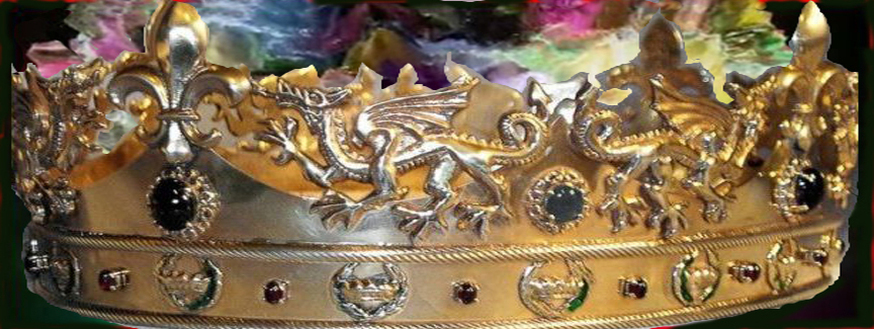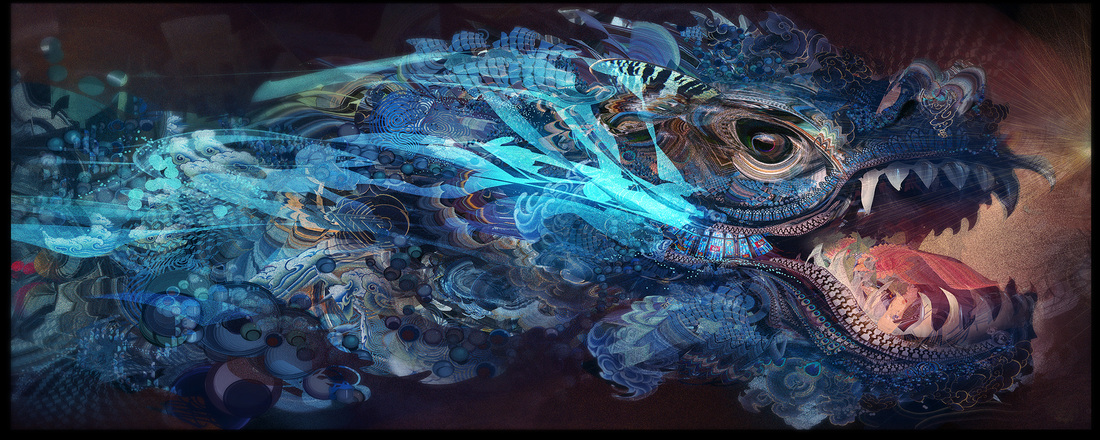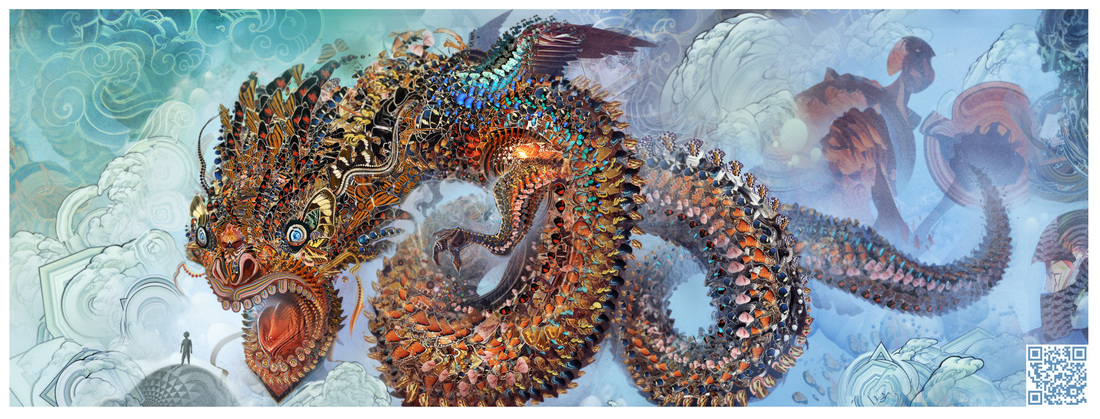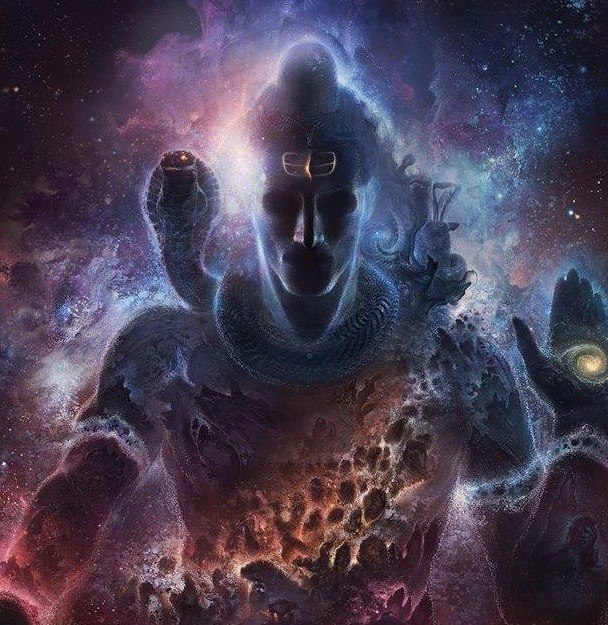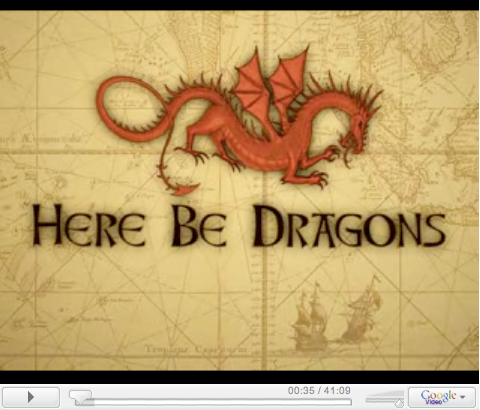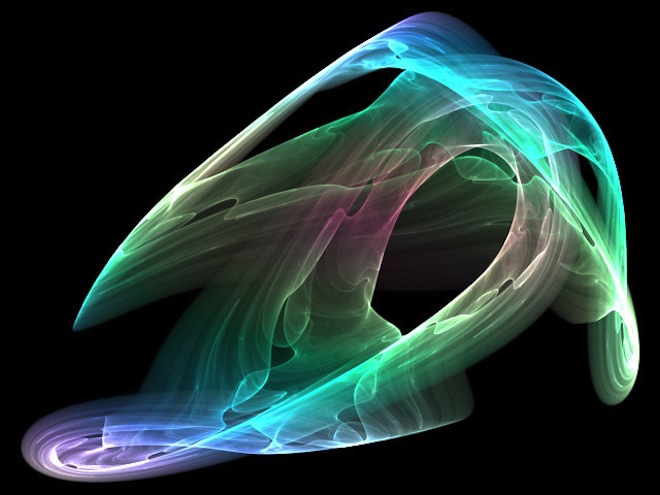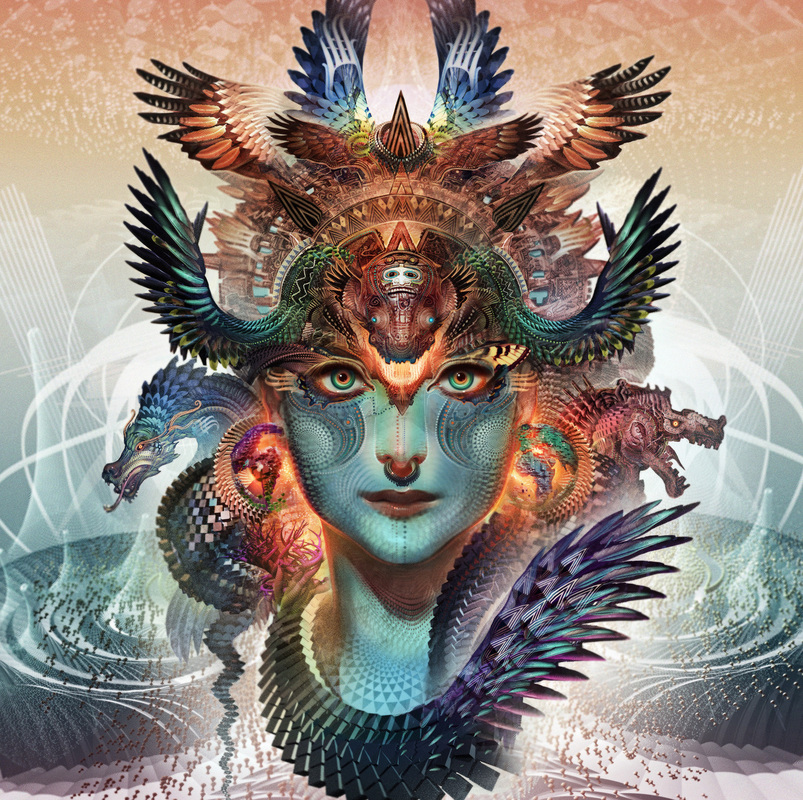Dragon Bones
The dragon is very much our raw psychic energy within the unconscious
(The cave where dragons live). The fire breathing kundalini Serpent that
is at first asleep is vile and woe unto him who does not know the process
of its purification when it is passed through the alchemical process, uniting cosmic masculine and feminine.
(The cave where dragons live). The fire breathing kundalini Serpent that
is at first asleep is vile and woe unto him who does not know the process
of its purification when it is passed through the alchemical process, uniting cosmic masculine and feminine.
Water Dragon, Android Jones
" Be not the slave of your own past. Plunge into the sublime seas, dive deep and swim far, so you shall come back with self-respect, with new power, with an advanced experience that shall explain and overlook the old." ~ Ralph Waldo Emerson
" Be not the slave of your own past. Plunge into the sublime seas, dive deep and swim far, so you shall come back with self-respect, with new power, with an advanced experience that shall explain and overlook the old." ~ Ralph Waldo Emerson
The serpent/dragon archetype is world-wide and relates to a number of human concerns--death, rebirth, healing, immortality, knowledge, wisdom, wealth, and finally water, which has much the same symbolism. Joseph Campbell, in one of his less inspired moments, claimed that Eastern dragons were different than Western ones, but in fact they are not, though the attitude toward them is somewhat different. Like in the west, dragons are associated with water in the form of weather, streams, bodies of water, and the primal cosmic ocean. The oldest and most purely mythic dragon stories deal with creation and the primal oceanic chaos which is a great dragon. In other stories the dragon withholds the waters causing drought until defeated by a champion. In legendary, as opposed to mythic, stories the dragon guards a treasure and often has an appetite for women, especially virgins.
Boom Shiva - Android Jones
Defining the archetypal Dragon in Jungian terms first requires we understand Jung's notion of the archetype. Jung refers to the Archetype as the 'type' in the psyche, an inner mental image (type being derived from the Greek tupos meaning imprint or blow). Though an archetype as an imprint presupposes that there was an imprinter in the first place, Jung concentrates on the image within the collective unconscious that dominates when there are no other rational thoughts.
Thus, we can equates the dragon with primordial awareness, but also with the inner effective power of matter, immanence or the subtle body -- vacuum potential -- the internal aspects of matter and mankind -- the energy body or psychophysical self. The dragon as universe symbolizes the wholeness of relationships. As Above; So Below.
The unconscious modifies the conscious. Jung's idea of the archetype as a Primordial Image required that it was at least common to entire races, or entire epochs, the most powerful archetypes being common to all peoples at all times. It also required that the image was in close accord to the ancient myths and symbols. The ancient symbols were supposedly created from the collective unconscious to explain certain phenomena of the world, rational thought being impossible at that time.
Jung referred to Dragons in a number of his works. He initially cites it as the arch-enemy of the Hero archetype, drawing mainly from the New Testament and Gnosticism. Viewing it as the mother Dragon which threatens to overwhelm the birth of the God, thus the Hero must defeat the Dragon before becoming the Hero. He later views the Tiamat-Marduk myth as the basis of the Mercurial Serpent image - the Dragon that both destroys and creates itself and represents the Prime Material (or Philosopher's Stone).
However Jung does fall back on his Mother Dragon theory in stating that the father figure triumphs over the matriarch thus signifying the transition of the world towards the masculine. He identifies the Dragon directly with the unconscious, which in being vanquished by the Hero indicates the natural state of the conscious. In a sense, both the mother Dragon and the Mercurial Serpent are closely linked, both being creators.
Considers the various ancient myths, however, we find problems with Jung's rather simplistic, and overtly Christian, notion. Third generation Jungian psychology, called archetypal psychology, rejects the primacy of the hero. Identification with the over-striving ego has gotten us into our modern dilemma that is destroying our planet. Many less heroic approaches to life and the Dragon are equally valid points of view. For those of dragon blood, the dragon is not something to be tamed and controlled, but that to which we naturally submit.
Tiamat is indeed the mother of creation, however she created the mushussu which was later tamed by Marduk. No doubt Jung would again describe this as the victory of the conscious Hero over the unconscious extension of the matriarch, but the mushussu is not a matriarchal figure nor is it vanquished. Instead it is more of a guardian image, tamed by the Hero and protecting the Hero.
The Egyptian serpentine Dragons bear even less resemblance to Jung's archetype. Though they are identified as being in conflict with the Gods in a parallel of the Hero myth, yet they do not represent the feminine, nor are they anything to do with the Prime Material - identified in both Osiris and Re. Indeed the conflict between brothers, which is prominent in Egyptian tales (primarily Seth slaying Osiris), also falls contrary to Jung's ideal of the mother-son conflict.
Even more at conflict with Jung are the Chinese Lung, who are identified as life-givers in that they bring the spring rains. Although this could be though of as a matriarchal figure, and the association with water as a representation of the Prime Material - said to be a form of water, there is no conflict and it does not play a part in the creation. The Aztec images also fall contrary to the Hero's adversary. If one can salvage anything from the Jungian archetype, it is that the Dragon may be a representation of the life-giving mother, though this is not true for all civilizations.
Unable to justify the cross-cultural Mother Dragon archetype, we fall back on Jung's statement that an archetype is something shared (at least) by the collective unconsciousness of cultural groups. We can then ascribe the matriarchal figure with the Babylonian Tiamat, and as an archetype of the Sumerians. The Egyptian archetype is that of the snake which destroys life and has to be defeated before life is reborn - in other words the Prime Material. Whereas the Chinese archetype is that of the life-giver, the lizard which emerges with the onset of the spring rains.
These archetypes continue influencing consciousness. The Chinese archetype has remained intact throughout the centuries, it is still the life-giver. The Christians, however, took on the notion of the Dragon as the Hero's adversary identifying it with the alleged Satanic connotations of Pagan religions. It does surface as the matriarchal figure, and as that of the Prime Material, through the writings of the early philosophers however these were eventually denounced by the mainstream - frightened that the old Pagan religions might surface again. The Christian teachings show the domination of the conscious over the unconscious. All in all, though there is evidence to support separate archetypal Dragons, there is none to support a single archetype for the whole human race.
Thus, we can equates the dragon with primordial awareness, but also with the inner effective power of matter, immanence or the subtle body -- vacuum potential -- the internal aspects of matter and mankind -- the energy body or psychophysical self. The dragon as universe symbolizes the wholeness of relationships. As Above; So Below.
The unconscious modifies the conscious. Jung's idea of the archetype as a Primordial Image required that it was at least common to entire races, or entire epochs, the most powerful archetypes being common to all peoples at all times. It also required that the image was in close accord to the ancient myths and symbols. The ancient symbols were supposedly created from the collective unconscious to explain certain phenomena of the world, rational thought being impossible at that time.
Jung referred to Dragons in a number of his works. He initially cites it as the arch-enemy of the Hero archetype, drawing mainly from the New Testament and Gnosticism. Viewing it as the mother Dragon which threatens to overwhelm the birth of the God, thus the Hero must defeat the Dragon before becoming the Hero. He later views the Tiamat-Marduk myth as the basis of the Mercurial Serpent image - the Dragon that both destroys and creates itself and represents the Prime Material (or Philosopher's Stone).
However Jung does fall back on his Mother Dragon theory in stating that the father figure triumphs over the matriarch thus signifying the transition of the world towards the masculine. He identifies the Dragon directly with the unconscious, which in being vanquished by the Hero indicates the natural state of the conscious. In a sense, both the mother Dragon and the Mercurial Serpent are closely linked, both being creators.
Considers the various ancient myths, however, we find problems with Jung's rather simplistic, and overtly Christian, notion. Third generation Jungian psychology, called archetypal psychology, rejects the primacy of the hero. Identification with the over-striving ego has gotten us into our modern dilemma that is destroying our planet. Many less heroic approaches to life and the Dragon are equally valid points of view. For those of dragon blood, the dragon is not something to be tamed and controlled, but that to which we naturally submit.
Tiamat is indeed the mother of creation, however she created the mushussu which was later tamed by Marduk. No doubt Jung would again describe this as the victory of the conscious Hero over the unconscious extension of the matriarch, but the mushussu is not a matriarchal figure nor is it vanquished. Instead it is more of a guardian image, tamed by the Hero and protecting the Hero.
The Egyptian serpentine Dragons bear even less resemblance to Jung's archetype. Though they are identified as being in conflict with the Gods in a parallel of the Hero myth, yet they do not represent the feminine, nor are they anything to do with the Prime Material - identified in both Osiris and Re. Indeed the conflict between brothers, which is prominent in Egyptian tales (primarily Seth slaying Osiris), also falls contrary to Jung's ideal of the mother-son conflict.
Even more at conflict with Jung are the Chinese Lung, who are identified as life-givers in that they bring the spring rains. Although this could be though of as a matriarchal figure, and the association with water as a representation of the Prime Material - said to be a form of water, there is no conflict and it does not play a part in the creation. The Aztec images also fall contrary to the Hero's adversary. If one can salvage anything from the Jungian archetype, it is that the Dragon may be a representation of the life-giving mother, though this is not true for all civilizations.
Unable to justify the cross-cultural Mother Dragon archetype, we fall back on Jung's statement that an archetype is something shared (at least) by the collective unconsciousness of cultural groups. We can then ascribe the matriarchal figure with the Babylonian Tiamat, and as an archetype of the Sumerians. The Egyptian archetype is that of the snake which destroys life and has to be defeated before life is reborn - in other words the Prime Material. Whereas the Chinese archetype is that of the life-giver, the lizard which emerges with the onset of the spring rains.
These archetypes continue influencing consciousness. The Chinese archetype has remained intact throughout the centuries, it is still the life-giver. The Christians, however, took on the notion of the Dragon as the Hero's adversary identifying it with the alleged Satanic connotations of Pagan religions. It does surface as the matriarchal figure, and as that of the Prime Material, through the writings of the early philosophers however these were eventually denounced by the mainstream - frightened that the old Pagan religions might surface again. The Christian teachings show the domination of the conscious over the unconscious. All in all, though there is evidence to support separate archetypal Dragons, there is none to support a single archetype for the whole human race.
Dharma Dragon, Android Jones
(c)2013; All Rights Reserved, Iona Miller, Sangreality Trust
[email protected]
Fair Use Notice
This site contains copyrighted material the use of which has not always been specifically authorized by the copyright owner. We are making such material available in our efforts to advance understanding of environmental, political, human rights, economic, democracy, scientific, and social justice issues, etc. We believe this constitutes a 'fair use' of any such copyrighted material as provided for in section 107 of the US Copyright Law. In accordance with Title 17 U.S.C. Section 107, the material on this site is distributed without profit to those who have expressed a prior interest in receiving the included information for research and educational purposes. If you wish to use copyrighted material from this site for purposes of your own that go beyond 'fair use', you must obtain permission from the copyright owner.
[email protected]
Fair Use Notice
This site contains copyrighted material the use of which has not always been specifically authorized by the copyright owner. We are making such material available in our efforts to advance understanding of environmental, political, human rights, economic, democracy, scientific, and social justice issues, etc. We believe this constitutes a 'fair use' of any such copyrighted material as provided for in section 107 of the US Copyright Law. In accordance with Title 17 U.S.C. Section 107, the material on this site is distributed without profit to those who have expressed a prior interest in receiving the included information for research and educational purposes. If you wish to use copyrighted material from this site for purposes of your own that go beyond 'fair use', you must obtain permission from the copyright owner.
